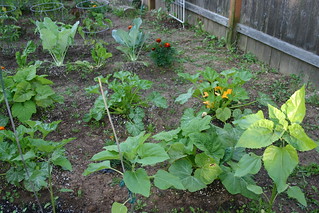Homemade Pesticide
Make your own pesticide minus the dangerous chemicals. (Photo Credits)
Pesticides is almost synonymous to dangerous chemicals that can wreak havoc to a person or an animal’s health when breathed or ingested.
For home gardeners, it may be a relief to know that pesticides can be made from chemical-free derivatives, and that it does not cost much because it can even be made at home.
Modern Life Blogs for instance shared a recipe on pesticide and Vermin Control Solution that is chemical-free.
“The acidic qualities of some vegetables and plants make them suitable for use as pesticides. Your normal dietary routine may already provide enough source material for you use. Start saving the clippings of your onions, peppers, and garlic. A basic organic pesticide can be created by mixing your extra onion clippings in warm water. Gather up your leftover pieces and set them to soak in the sun for about a week. When the solution is ready, you may use it to kill most household pests including ants and cockroaches. A poison made from chilies and garlic works well against garden pests like aphids and caterpillars.”
Read the whole article here.
Organic Pesticides
NewsTarget meantime shared a list of organic pesticide any home gardener can source and use.
“Salt: This is one of the easiest natural pesticides. Simply stir in two tablespoons of crystal salt into a gallon of warm water, mix completely, then spray over both indoor and outdoor plants. This solution works well against spider mites, cabbage worms and slugs.”
Check out the whole list here.
Bees as Pesticide Sprayers?
The website Take Part meantime reported on recent studies on Entomovectoring where insects can be used to spray pesticides on a plant field. A1 Fumigation http://sd.a1-fumigation.com
“In entomovectoring studies, honeybees have worked best for large field delivery because they forage up to two miles from the hive. Bumblebees tend to stay close to home, sticking to within 400 to 600 feet of their nest. But they’re less aggressive than honeybees and more tolerant of temperature fluctuations, making them effective in greenhouses. European researchers have also experimented with mason bees, which can sometimes be better vectors because they visit each flower more often. Despite initial concerns, the bees haven’t suffered major ill effects while delivering certain pest-killing viruses and bacteria to flowers. Certain sublethal effects, such as an increased rate of water loss, may pose a risk, though at far lower levels than with synthetic pesticides.”
Read more here.
When pests become even more persistent and destructive it is always wise to consult professional fumigation services.

No comments:
Post a Comment